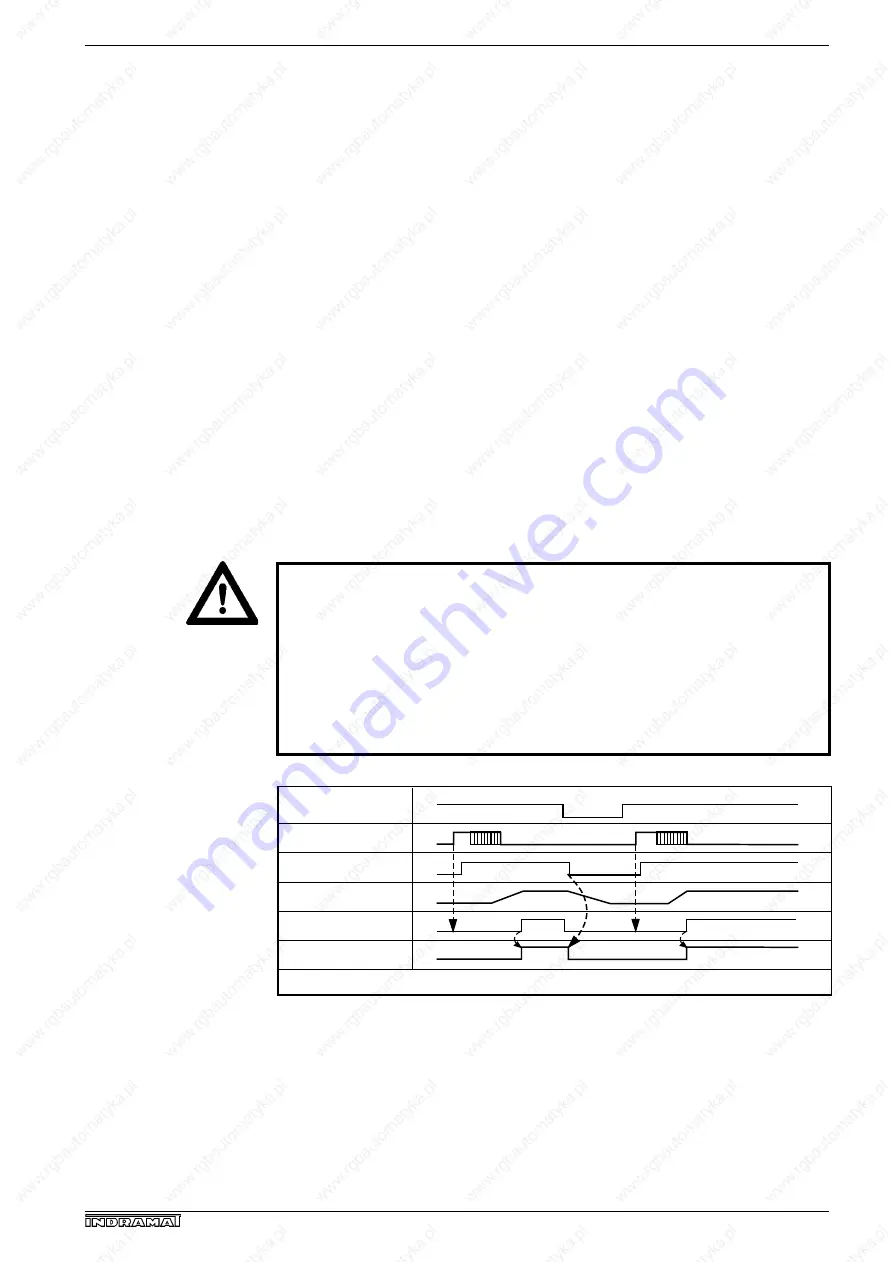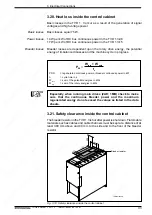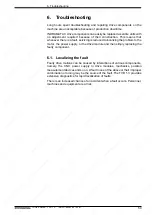
40
• DOK-POWER*-TVD*1.3****-ANW1-EN-E1,44 • 02.97
4. TVD 1.3 Interconnections
4.4. TVD interconnect without DC bus dynamic braking
If the uncontrolled coasting of the drives cannot damage the plant.
Typical applications
• if the TVD supplies inductance drives only and
• if the end-stops of the feed axes are sufficiently damped.
The NCB link on the TVD (X3/1 - X3/2) may not be jumpered.
The DC bus voltage is not short-circuited. In the case of inductance drives,
the DC bus dynamic brake has no additional braking effect when there is a fault
in the drive electronics. If the DC bus is short-circuited, inductance drives can
no longer be braked under drive control.
With an E-stop or if one of the monitoring circuits of the TVD is tripped, e.g., as
a result of a power failure, then the drives are braked at maximum torque under
drive regulation.
When the E-stop key is pressed, the main contactor in the TVD drops out
immediately. The drive enable signal of the drives is dropped by means of an
auxiliary contact of the main contactor. This leads to a drive-internal switching
of the velocity command to zero in all drives in th drive packet. All drives are
braked under control.
Caution !
Source of danger:
Coasting of the drives with faulty drive electronics.
Possible consequences:
Machine damage.
How to avoid:
• End stops of feed axes must be sufficiently damped.
• Use motors with mechanical brakes.
OFF
ON
K1
(X5/3-4)
DC bus
voltage
UD contact
Drive enable signal
from control unit
t
1
≥
200 ms; t
2
= 1.25 ... 1.4 s; t
3
≥
40 ms
t
3
t
2
t
2
t
1
t
1
SVTVDoZW
Fig.4.6: Signal path when powering up the TVD
Application
Features
Mode of operation
















































